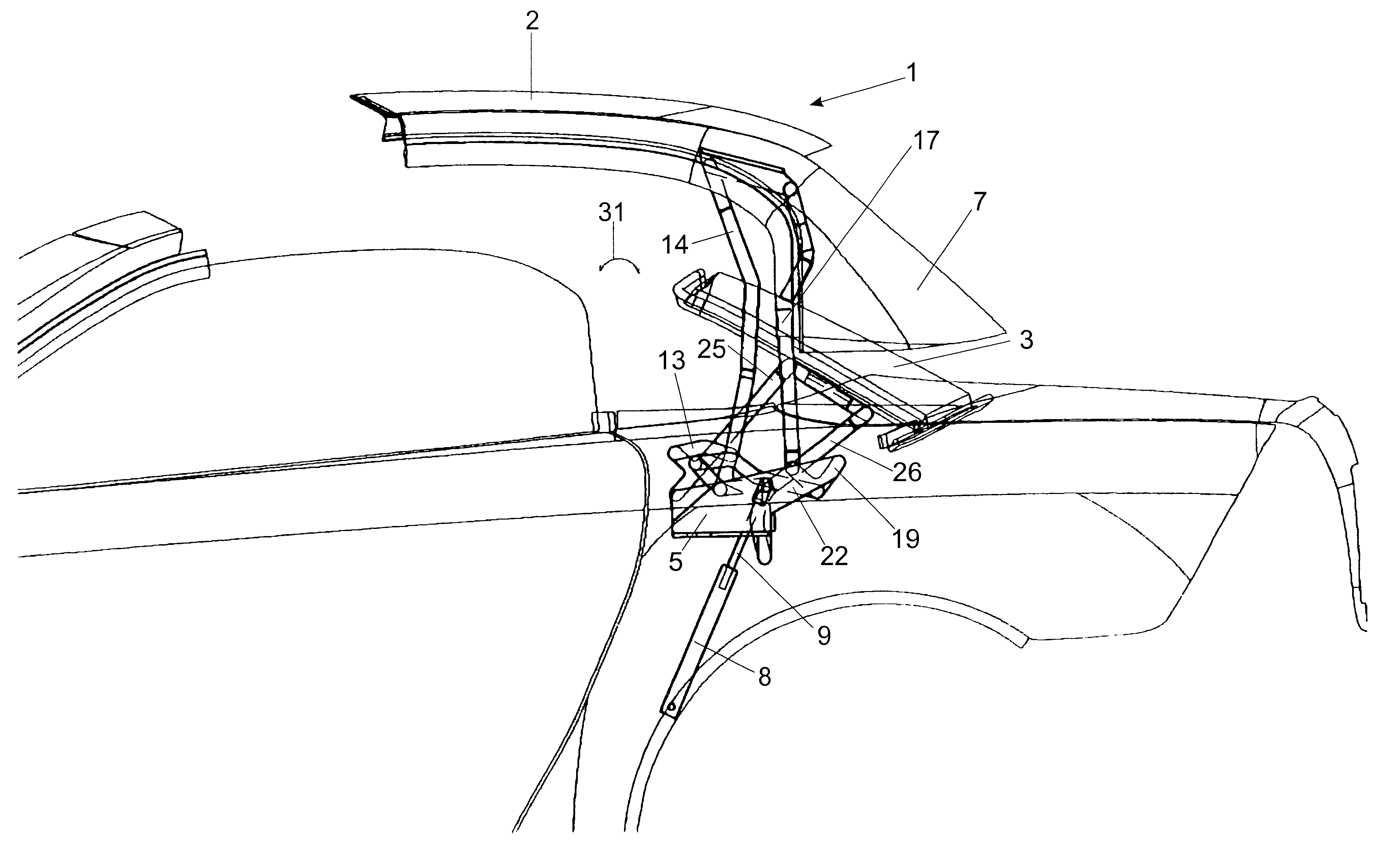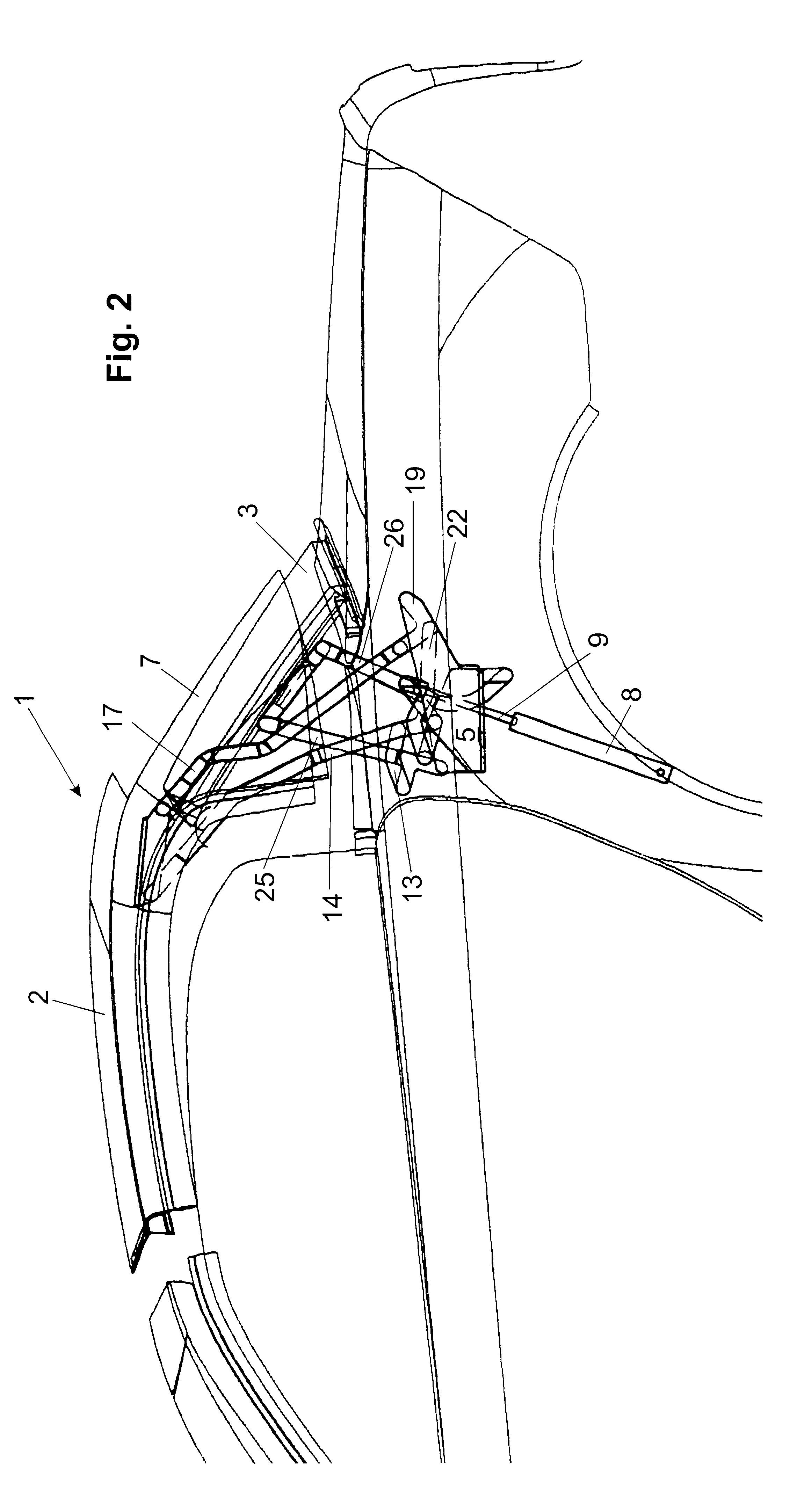Roof construction for a motor vehicle having a removable roof
a technology for motor vehicles and roofs, which is applied in the direction of roofs, windscreens, windows, etc., can solve the problems of occupying a considerable amount of storage space, unable to provide a loading area, and extremely bulky packaging
- Summary
- Abstract
- Description
- Claims
- Application Information
AI Technical Summary
Benefits of technology
Problems solved by technology
Method used
Image
Examples
Embodiment Construction
FIGS. 1 to 7 show part of a motor vehicle, which is denoted as a whole by the reference number 1, with a removable roof which is designed as a hard shell roof or a hard top and comprises a first, front roof part 2 and a second, rear roof part 3.
The front roof part 2 is connected via a first, articulated connection, which is designed as a seven-bar linkage 4, to a main bearing 5 which is fixed on the vehicle body. The rear roof part 3 is connected by means of a four-bar linkage 6 as an articulated connection to the main bearing 5 which is fixed on the vehicle body. The first roof part furthermore has C-struts 7 adjoined to it which essentially laterally enclose the second roof part 3. The second roof part in the present case is a framed rear window.
The drive of the kinematic arrangement defined by the seven-bar linkage 4 and the four-bar linkage 6 takes place via a hydraulic piston-cylinder unit 8 whose piston rod 9 engages on a projection 10 of a first link 14 of the seven-bar linka...
PUM
 Login to View More
Login to View More Abstract
Description
Claims
Application Information
 Login to View More
Login to View More - R&D
- Intellectual Property
- Life Sciences
- Materials
- Tech Scout
- Unparalleled Data Quality
- Higher Quality Content
- 60% Fewer Hallucinations
Browse by: Latest US Patents, China's latest patents, Technical Efficacy Thesaurus, Application Domain, Technology Topic, Popular Technical Reports.
© 2025 PatSnap. All rights reserved.Legal|Privacy policy|Modern Slavery Act Transparency Statement|Sitemap|About US| Contact US: help@patsnap.com



